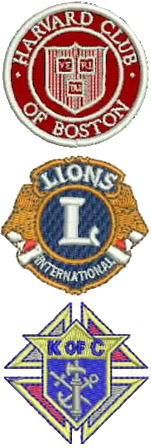
In the 17th century, a peculiar phenomenon emerged in England: men with no family or institutional ties to one another would gather informally to socialize, debate, and network with like-minded peers and colleagues, to discuss everything from politics to literature to economics, building social connections between them that hadn’t existed before. They met in taverns and coffeehouses, and they called these gatherings “clubbes”. Most famous of all was the Mermaid Tavern‘s “Friday Street Club”, whose members included Sir Walter Raleigh, John Donne, Ben Jonson, and, if legend is to be believed, even William Shakespeare.
Today, of course, we take the concept of the “club” for granted, but the idea hasn’t been around forever. Four hundred years ago it was genuinely novel to see people regularly meeting for reasons other than governance, religion, defense, family, or business purposes. The club was wholly new idea in the evolution of human social relations, enabling people to connect in ways they’d never connected before.
Today we face a similar step in this evolution. We are witnessing the emergence of a new way for people to relate to each other and to meet new people using the so-called social web. What’s more, this new model has a lot in common with the clubs of the 17th century, and indeed with all the face-to-face clubs that exist today.
I’ve argued in the past that social networks are brands, where people choose to associate with the networks they identify with emotionally in the same way we choose products based on brand affinities. But today’s online communities are also clubs: they are loosely-formed private organizations akin to nightclubs, country clubs, and social clubs. Every social network will, over time, attract people with similar cultural interests and affinities, and just like in the physical world these shared interests are far more important than the amenities of the club’s meeting place.

Web businesses have, of course, attempted to both mirror and support real-world clubs like these through toolkits like Yahoo Groups, enabling subcultures to emerge within a single platform. But I think something is also going on at a higher level — cultural differences are emerging between the social web platforms themselves, independent of the platforms’ features or services, even independent of the subcultures within the community’s whole. As the cultures within these platforms evolve, we are in effect forming clubs by virtue of the social networks we participate in, in the same way that Sir Walter Raleigh’s choice of tavern eventually became a regular gathering place for his kind of people.
For example, I use Twitter to keep connected with a group of people I have come to think of as my “Twitter Friends”. My other digital “social groups” may overlap that group, and each other, but never completely. My memberships in LinkedIn, Flickr, MySpace, etc, are different in nature — each has a very different personality, character, and vibe. Each is a different “scene”, serving a different social purpose for me — one may be very professional, another more narcissistic, others may be either entertaining or purely practical.
Of course there is also this blog, the other blogs I participate in as a commenter, the mailing lists I belong to, my AIM buddy list, and my personal email address book, each of which has its own uses in enabling me to connect to my friends, family, and colleagues. And the “member list” for each platform is different. Each of these digital tools or platforms is thus, in a way, a different “club” to which I belong.
Over time, clubs like The Friday Street Club evolved to serve specialized purposes such as literature or sports, but many remain whose sole purpose is, like today’s web social networks, to socialize with other people — for example the Rotary Club, the Lions Club, or even the Masons. But most clubs today tend to have themes or agendas (hobbies, interests, objectives) to tie their members together, and in that sense most web social networks today, of course, aren’t like clubs at all.
But I think this is part of where I am going with this — that social networks cannot maintain their humongous all-things-to-all-people unfocused scope. They will begin to take on structures that look more like the ways we’ve traditionally gathered together in clubs, with unique and specialized flavors and characters.
This emergence of social network differentiation has already been observed (to cite a controversial example but one near to my heart) in danah boyd’s essay “Viewing American class divisions through Facebook and MySpace“, noting that there seems to be an emerging but palpable class-based difference between the two megasites’ memberships. It’s already happening.
How, then, do social networks develop their particular characters? How do these “scenes” emerge, or are they in fact created and cultivated deliberately? That’s for another post.